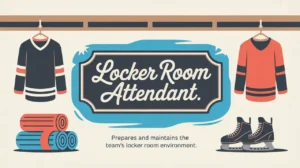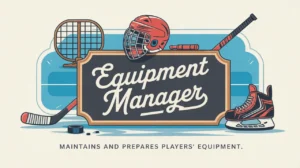Jim’s Intro to the Sleep Coach
Hi folks, Jim here, the only commentator who once tried to pull an all-nighter to “understand player fatigue” and woke up in the third period of the next game.
What is a sleep coach?
A sleep coach is a specialist who helps athletes improve the quality, consistency, and timing of their sleep to optimize recovery, mental sharpness, and physical performance.
Sleep affects everything: reaction time, decision-making, injury risk, mood, and energy. The sleep coach’s job is to turn sleep from something players simply do into a structured, strategic tool that fuels performance on and off the ice.
How does it work?
Sleep coaches improve athlete readiness through education, routine building, and monitoring:
Sleep Assessment
- They start by analyzing players’ sleep habits, schedules, environments, and potential disruptions (travel, late games, early practices, stress).
- Tools like wearables, sleep diaries, or questionnaires help establish baselines.
Routine and Habit Design
- Sleep coaches build personalized routines that support consistent sleep cycles, including pre-sleep rituals, light exposure management, and timing adjustments.
- This often involves teaching players how to “wind down” effectively after late-night games.
Environment Optimization
- They help players adjust their bedrooms for better sleep: controlling temperature, noise, light, and bedding.
- Travel-specific advice is given to handle hotel rooms, flights, and time zone changes.
Performance Education
- Players learn how sleep affects reaction time, emotional regulation, injury risk, and recovery.
- By making the science clear, sleep coaches increase buy-in from athletes and staff.
Monitoring and Adjusting
- Using sleep trackers or feedback, coaches monitor progress and fine-tune strategies.
- This can include napping plans, shift work solutions, or handling mid-season fatigue spikes.
Common Situations Involving Sleep Coaches
- Late-Night Games: Helping players wind down and recover efficiently.
- Road Trips: Adjusting routines to new time zones and hotel environments.
- Tournament Schedules: Strategizing rest between multiple games in short timeframes.
- Injury Recovery: Using quality sleep to speed healing.
- Performance Slumps: Identifying sleep debt as a contributing factor.
How do you make good decisions with it?
Effective sleep coaching relies on routine, environment, and commitment.
- Prioritize Consistency: Going to bed and waking up at regular times matters more than total hours alone.
- Protect Sleep Environments: Darkness, quiet, and cool temperatures help.
- Respect Sleep Debt: You can’t function at your best if you’re constantly tired.
- Coordinate with Schedules: Travel and practice times should align with recovery needs.
- Educate the Whole Team: Staff buy-in ensures better adherence to sleep strategies.
How do you master it?
Mastering the sleep coach role requires knowledge of circadian rhythms, behavioral change strategies, and practical problem-solving. The best coaches translate sleep science into routines players can stick to, earning trust through clear results and adaptability to real hockey schedules.
What does it look like when done right?
A great sleep coach helps create teams that are alert, consistent, and less prone to injuries, with players who recover faster, make better decisions, and maintain energy through long seasons. Even modest improvements in sleep can produce measurable performance gains.
Commentator’s Corner
Jim’s Take
The sleep coach is like the team’s secret recharge station. No fancy moves, no highlight reels, just the quiet power of turning good sleep into better hockey.
Parent Tip
Encouraging solid sleep routines early helps young athletes handle growth, training, and academics without burning out.
Player Tip
Don’t treat sleep like an afterthought. Treat it like a weapon. Your game depends on it more than you think.
A Final Thought
The sleep coach is the keeper of recovery’s most powerful tool, blending science and structure to make sleep a strategic asset. When mastered, the role combines habit design, environmental control, and education, turning rest into a performance edge.









